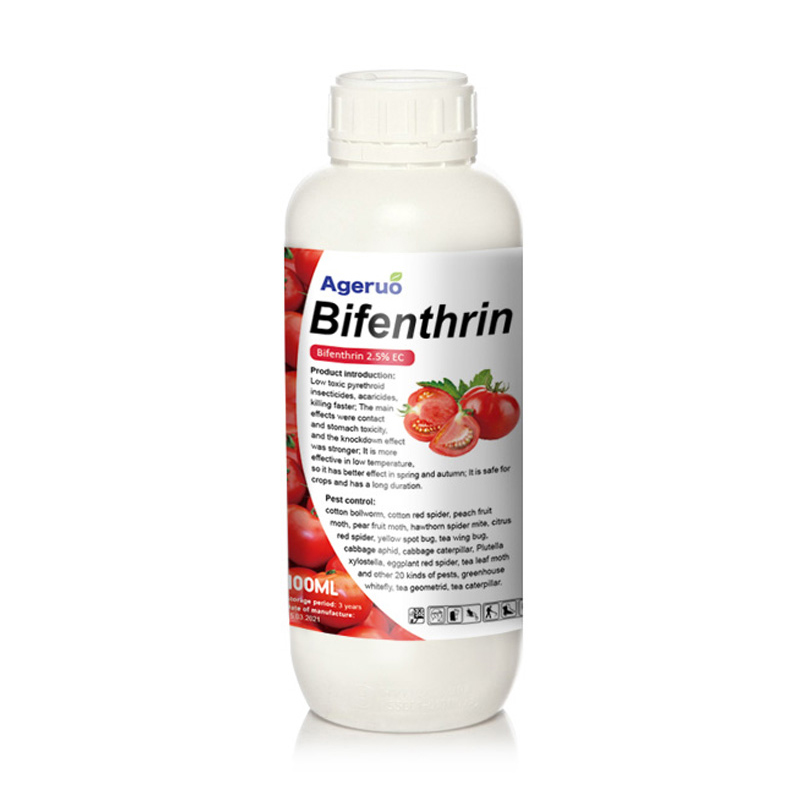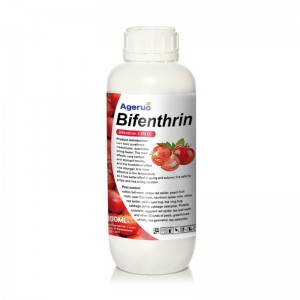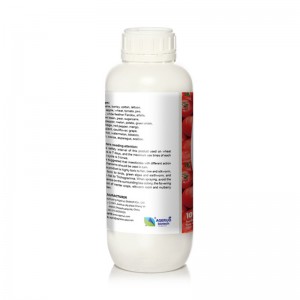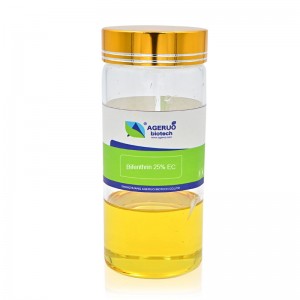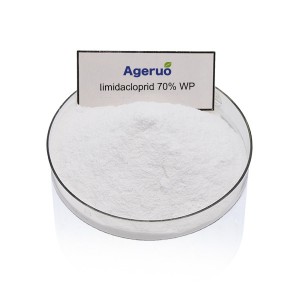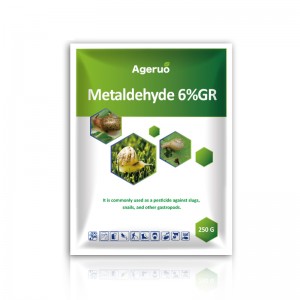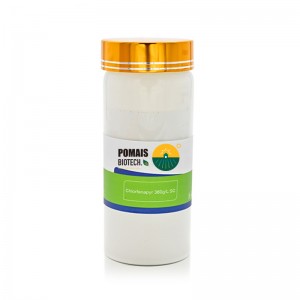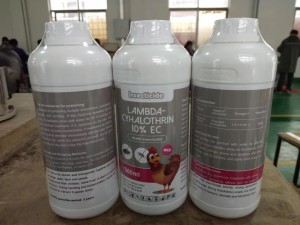Products
POMAIS Insecticide Bifenthrin 2.5% EC | Pesticide Fao Pest Control
Introduction
You deploy a pyrethroid IRAC 3A solution built for fast knockdown and a reliable residual tail under variable field conditions where registered. Bifenthrin 2.5% EC system emulsifies quickly, spreads to form a consistent film, and supports contact & stomach action against outbreaks. In threshold-driven programs, this profile helps you stabilize injury curves between services without prescribing rates or frequencies. Operationally, you benefit from straightforward tank preparation, predictable mixing behavior, and OEM-ready documentation (COA / SDS / TDS) that keeps audits and distributor onboarding efficient and defensible.
Where it fits
You position this product in open-field crops, ornamentals, and landscape programs that require visible relief plus short-to-medium residual control. It integrates with IPM rotations, scouting, and sanitation, and it pairs well with tools addressing resistance management and off-target risk. Because IRAC 3A can elevate insect movement during exposure, you plan routes to minimize off-plant dispersal and coordinate with weather discipline to protect buffer zones and sensitive areas. All deployments remain label-guided and where registered, with pollinator and aquatic safeguards embedded in the service routine.
Why it matters
-
Action clarity: contact & stomach action drives rapid field response.
-
Program stability: residual supports interval planning across blocks.
-
Commercial readiness: COA/SDS/TDS + OEM private label shorten time to market.
Related reading: Bifenthrin vs Fipronil
| Active ingredients | Bifenthrin |
| CAS Number | 82657-04-3 |
| Molecular Formula | C23H22ClF3O2 |
| Application | It can control cotton bollworm, red bollworm, tea looper, tea caterpillar, apple or hawthorn red spider, peach heartworm, cabbage aphid, cabbage caterpillar, cabbage moth, citrus leaf miner, etc. |
| Brand Name | POMAIS |
| Shelf life | 2 Years |
| Purity |
2.5% EC |
| State | Liquid |
| Label | POMAIS or Customized |
| Formulations | 2.5% SC,79g/l EC,10% EC,24% SC,100g/L ME,25% EC |
| The mixed formulation product | 1.bifenthrin 2.5% + abamectin 4.5% SC2.bifenthrin 2.7% + imidacloprid 9.3% SC3.bifenthrin 5% + clothianidin 5% SC 4.bifenthrin 5.6% + abamectin 0.6% EW5.bifenthrin 3% + chlorfenapyr 7% SC |
Mechanism of action of Bifenthrin
You deploy a pyrethroid IRAC 3A that targets the voltage-gated sodium channel in insect nerve membranes. By prolonging channel opening, the active drives hyperexcitation → knockdown → mortality, expressed through contact & stomach action on exposed stages. In practice, you see fast visible relief against outbreaks, followed by a residual tail that helps stabilize intervals where registered. Because 3A can induce irritancy/flush-out, you schedule runs to limit off-plant dispersal, coordinate with weather discipline to protect buffer zones, and maintain uniform film coverage for consistent outcomes. All deployments remain label-guided, integrated with scouting and sanitation to reduce re-infestation pressure and support long-season program performance.
Program synergy & rotation (resistance stewardship)
-
Integrate in IPM rotations with non-3A partners as labels permit; avoid back-to-back 3A windows across generations.
-
Pair with monitoring thresholds, field hygiene, and exclusion to lower re-infestation and selection pressure.
-
Where pollinator risk is material, plan around bloom windows and manage drift; maintain REI/PHI compliance and local restrictions.
-
Record species mix and life stages; pivot partners when composition shifts to prevent patterning selection on one guild.
Performance drivers you control
-
Emulsification & agitation: use clean water in a label-compatible pH range; follow mixing order; keep continuous agitation.
-
Coverage: select patterns/droplets that wet upper and lower leaf surfaces without runoff; verify film formation at canopy depth.
-
Timing: treat at thresholds and active exposure windows; avoid extreme heat, high wind, inversions, or imminent rainfall.
-
Verification: log field IDs, batch numbers, weather, injury curves, and live counts to tune intervals and document outcomes.
Suitable crops:

Act on these Pests:

Using Method
| Formulations |
Crop names |
Fungal diseases |
Dosage |
usage method |
|
2.5%EC |
tea tree |
Tea green leafhopper |
1200-1500ml/ha |
spray |
|
cotton |
Cotton bollworm |
1650-2100ml/ha |
spray |
|
|
tea tree |
Whitefly |
1200-1500ml/ha |
spray |
|
|
tea tree |
Tea looper |
750-900ml/ha |
spray |
|
|
wheat |
aphid |
750-900ml/ha |
spray |
Application Methods
How you prepare — keep the EC reliable from tank to last nozzle
You apply this bifenthrin 2.5% EC (IRAC 3A) strictly according to the local label, treating the tank as a controlled system from water source to spray-out. Start with clean water in a label-compatible pH range, strain the first fill, and maintain continuous agitation so the emulsified concentrate stays homogeneous. Follow the label mixing order and run a jar test for first-time partners or adjuvants to check emulsion stability. Select patterns that give uniform film coverage on upper and lower leaf surfaces, and keep filters/nozzles clean to avoid streaking and skips that undermine contact & stomach action.
Prep & mixing checklist
-
Water hygiene & pH: use clean water within a label-compatible pH; flush lines before charging the tank.
-
Strain & agitate: strain the first fill; keep continuous agitation through the last nozzle.
-
Mixing order: follow the label mixing order; add adjuvants only if label-permitted.
-
Jar test: verify emulsion stability with site water and planned partners before field runs.
-
Hardware discipline: confirm screens/nozzles are matched and clean; replace worn parts to protect film consistency.
When you spray — timing, coverage, and environmental discipline
You schedule services on monitoring thresholds, targeting early instars for chewing pests and periods of active feeding for piercing–sucking insects. Coordinate with weather discipline to protect buffer zones and sensitive receptors: avoid high wind, thermal inversions, extreme heat, or imminent rainfall that compromise deposits. Around pollinator exposure, plan away from bloom windows and manage drift using nozzle selection and travel speed. In protected cultivation, align with ventilation and climate control so leaf wetness and airflow support deposition and a consistent residual tail—always label-guided and where registered.
Timing & field checklist
-
Threshold-triggered runs: act on scouting signals; prioritize early instars and active feeding windows.
-
Coverage first: confirm wetting on both leaf surfaces; avoid excessive runoff that wastes spray and reduces contact.
-
Weather windows: steer clear of heat spikes, strong wind, inversions, or imminent rain; respect buffer zones.
-
Pollinator safeguards: avoid bloom windows; comply with local notices and signage where required.
-
Protected systems: coordinate with ventilation/climate to maintain deposit quality and residual performance.
How you verify — close the loop and protect efficacy
You verify outcomes with pre- and post-service scouting, tracking injury curves, live counts, and any honeydew/sooty-mold indicators in hemipteran programs. Record field IDs, batch/lot numbers, tank constitution, nozzle set, weather, and efficacy snapshots to standardize operations and meet audit expectations. When species composition shifts or pressure rebounds, rotate to non-3A partners as the label permits and tighten sanitation to lower re-infestation pressure. Observe REI/PHI and any regional rules for pyrethroids, and keep the program integrated with IPM so selection pressure is distributed across modes and tactics rather than concentrated on IRAC 3A alone.
Verification & records checklist
-
Scouting cadence: document pre/post counts and injury curves to evaluate interval planning.
-
Traceability: log fields, dates, lot numbers, tank build, weather, nozzle set for every run.
-
Rotation: pivot to non-3A partners per label when composition changes or pressure trends upward.
-
Compliance: enforce REI/PHI; maintain signage/notifications and disposal as local rules require.
Formulation Stability & Packaging Options
Engineered EC you can count on
-
Emulsifiable Concentrate (EC) formulated for fast emulsification, stable dispersion, and uniform film formation across typical water qualities.
-
Balanced solvent–emulsifier system to support contact & stomach action and maintain consistent knockdown plus a residual tail where registered.
-
QC targets cover HPLC assay, appearance/color, acid value/pH (as applicable), emulsion stability/persistent foam, viscosity, and cold/heat holds to validate transport and seasonal storage.
Storage & handling discipline
-
Keep in original, tightly closed containers; protect from heat, frost, and direct sunlight; implement FIFO and log batch/lot numbers for traceability.
-
Agitate before and during use; strain the first fill; maintain continuous agitation through the last nozzle to protect emulsion quality.
-
Follow label guidance on incompatibilities and disposal; always follow the product label and local regulations.
Packaging matrix (export-ready)
-
HDPE/Coex bottles with tamper-evident closures and foil liners; UN-rated cartons/palletization options available.
-
Standard packs: 1 L / 500 mL / 250 mL and bulk. Barcoding/QR and multilingual artwork supported via OEM.
Tank Mix Compatibility & Safety
Compatibility routine
-
Use clean water in a label-compatible pH range; follow the label mixing order.
-
Run a jar test for first-time partners/adjuvants; avoid strong acids/alkalis and unvetted solvent-heavy additives that may break the emulsion.
-
Keep continuous agitation; verify screen/nozzle integrity to prevent streaking and skips.
Safety & stewardship essentials
-
Observe PPE, REI/PHI, and signage/notification rules; manage buffer zones and drift using weather and nozzle discipline.
-
Schedule away from bloom windows to protect pollinators; implement aquatic safeguards near surface water.
-
Respect any regional restrictions on pyrethroids (IRAC 3A); deployments remain label-guided and where registered.
Regulatory Compliance
Operate within the rules
-
Use only where registered, following local labels for crops, targets, intervals, and seasonal limits.
-
Packaging carries GHS elements; programs align with MRL, PHI, and REI requirements, especially for export markets.
-
Maintain traceable records (fields, dates, lots, weather, species mix, outcomes) to support audits and stewardship reviews.
Environmental profile (principles)
-
IRAC 3A pyrethroid with contact & stomach action; high aquatic toxicity risk—protect water bodies with buffer zones and drift control.
-
Plan around pollinator exposure (avoid bloom, manage off-target movement).
-
Follow local waste and container disposal rules; keep all operations label-guided.
OEM Services & Market Support
Speed to market
-
Private-label OEM with multilingual artwork, barcoding/QR, and tamper-evident packaging aligned to your brand system.
-
Documentation kit: COA / SDS / TDS, plus spec sheet and label templates to streamline distributor onboarding and registration support.
Supply & operations
-
Forecast-based production slots, confirmed lead-time windows, and export-ready palletization reduce downtime and cost.
-
Field toolkit: mixing order guides, jar test SOPs, scouting templates, and a service log framework for standardization and audits.
Field Use Scenarios
Protected vegetables — whiteflies + Lepidopteran larvae
-
At thresholds, schedule runs when larval feeding and probing coincide; align with ventilation/climate for deposit quality.
-
IRAC 3A provides fast knockdown; the EC film supports residual control between service windows. Rotate to non-3A partners per label.
Cotton — mirids/aphids with bollworm pressure
-
Treat at early instars and active piercing–sucking phases; secure uniform coverage across top and mid-canopy.
-
Combine contact & stomach action for visible relief and residual planning; avoid bloom windows to protect pollinators.
Perennial fruit & vines — quality protection
-
Use at scouted thresholds for leafrollers/fruitworms with intermittent aphid flights; optimize water volume for leaf undersides.
-
Align with MRL/PHI, maintain buffer zones, and verify outcomes via post-service counts.
All scenarios are label-dependent; always follow the product label and local regulations.
FAQ
Q1. Can I tank-mix this EC with other insecticides or foliar inputs?
Only if the label permits. Run a jar test, maintain agitation, and avoid strong acids/alkalis or unvetted solvent-heavy adjuvants.
Q2. How does it fit resistance management?
It is a pyrethroid IRAC 3A; rotate to non-3A partners and embed IPM (scouting, sanitation, exclusion) to diversify selection pressure.
Q3. Is it suitable for protected cultivation?
Yes, where registered. Coordinate ventilation/climate, plan around bloom windows, and manage drift.
Q4. What documentation ships with each lot?
You receive COA / SDS / TDS with batch traceability for inbound QA and audits.
Q5. What is the shelf life and storage guidance?
Store in original, tightly closed containers, away from heat/frost/sunlight; agitate before use. Follow the label for shelf-life guidance.
Q6. What pack formats and lead times are available?
Export-ready 1 L / 500 mL / 250 mL and bulk; lead-time windows and MOQ are confirmed at quotation based on forecast.
Q7. Are there regional restrictions on pyrethroids?
Some markets regulate IRAC 3A applications. Always follow the local label and applicable rules.
Why Choose POMAIS
-
Formulation engineering: reliable emulsification, film formation, and QC (HPLC, emulsion stability, viscosity, cold/heat holds).
-
Compliance leadership: standardized label-guided language, GHS/MRL/PHI/REI alignment, and traceable records templates.
-
OEM speed & resilience: fast private-label activation, multilingual artwork, and season-aligned production slots.
-
Technical partnership: practical mixing guides, jar test SOPs, and rotation roadmaps consistent with IRAC stewardship.
Partner with POMAIS
Request your spec sheet, label templates, samples, and a confirmed MOQ/lead-time window. Share your target crops, pest spectrum, and pack preferences; we will align branding, logistics, and rotation planning to your market strategy. Always follow the product label and local regulations.

